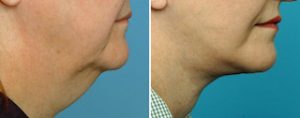The natural looking facelift result is the most important goal to most patients that consider or undergo the procedure. Few patients want to look like they have had a facelift or look excessively pulled. (windswept look) Patients desire to set the clock back so to speak and look like a more youthful version of themselves. Having scars that are well hidden and not easily observed by even hairdressers is part of the natural look. Patients are also interested in the time of recovery and may even choose a lesser operation so they can resume normal activities sooner.

Since patients today present for facelift surgery at a wide range of ages, their skin quality and looseness and their hair characteristics (density, position and hairstyle) all impact in how the facelift is performed. Generally patients have three main areas of concern about their aging face although in younger patients not all may be present. These include a loose neck with a double chin or neck bands, the development of jowls and lack of a smooth jawline and the appearance of nasolabial fold and marionette lines. Facial wrinkles are also of concern although less than the three previously mentioned concerns.
In discussing facelift surgery with patients, it is extremely important to point out what it does not do as much as what it can do. Patients will often lift up on their cheeks and say this is the change they want. Or because of some social stigmas about having a ‘facelift’, they lift up and back on their neck and say this the change they want but are definitely not interested in any type of ‘facelift’. One of the great misconceptions about this form of facial rejuvenation is that it will lift up drooping mouth corners or remove lip lines. These common misconceptions must be dispelled during the initial consultation as any misunderstanding about them will lead to an early disapppointment after surgery when the swelling has subsided.
The facial aging changes determines the type of facelift that the patient needs. Not every patient needs the exact same type of operation to get a good result. In my experience facelift surgery can be broken down to three basic types based on the amount of surgery needed. These types differ based on the degree of skin undermining (short or long flaps), the type of SMAS manipulation (lateral face) and how the plastymal muscle is treated. (neck) A In short, a Type 1 facelift is primarily a jowl effacing procedure, a Type 2 facelift treats both the jowls and the neck while a Type 3 facelift is for the extensive turkeynecks or the very heavy neck.
Dr. Barry Eppley
Indianapolis, Indiana


